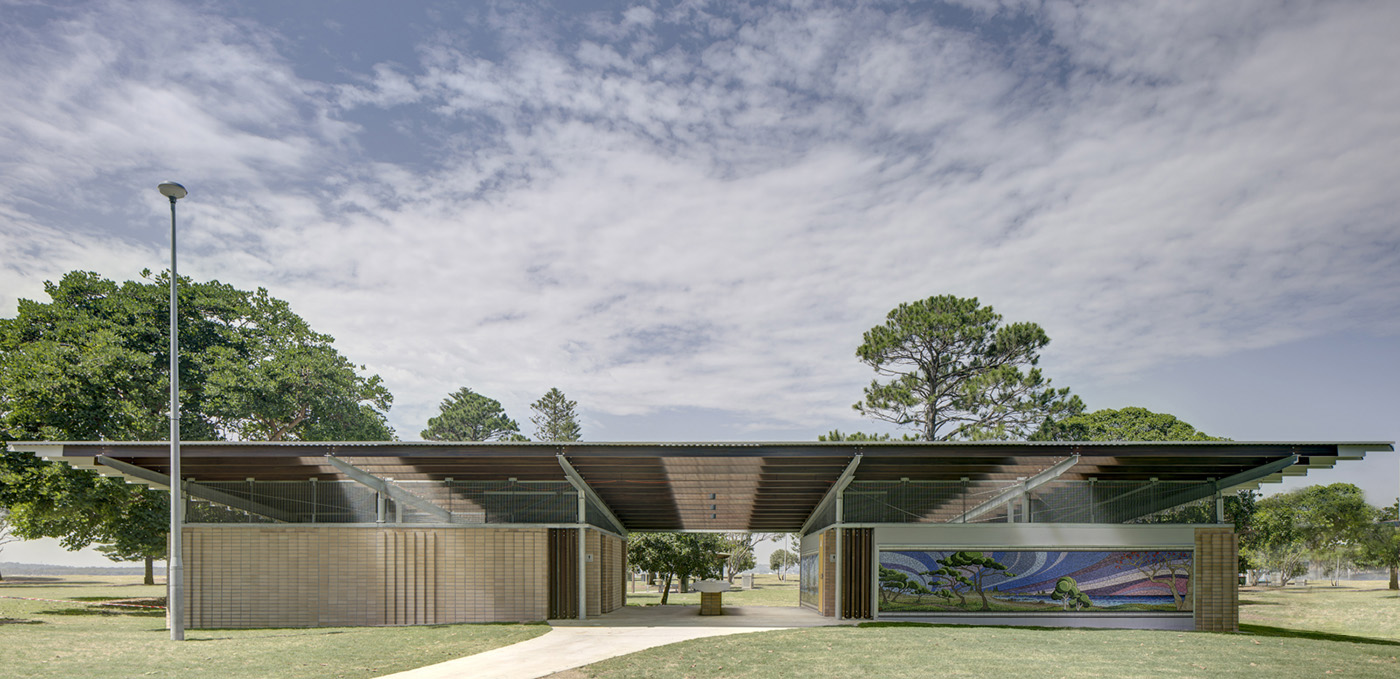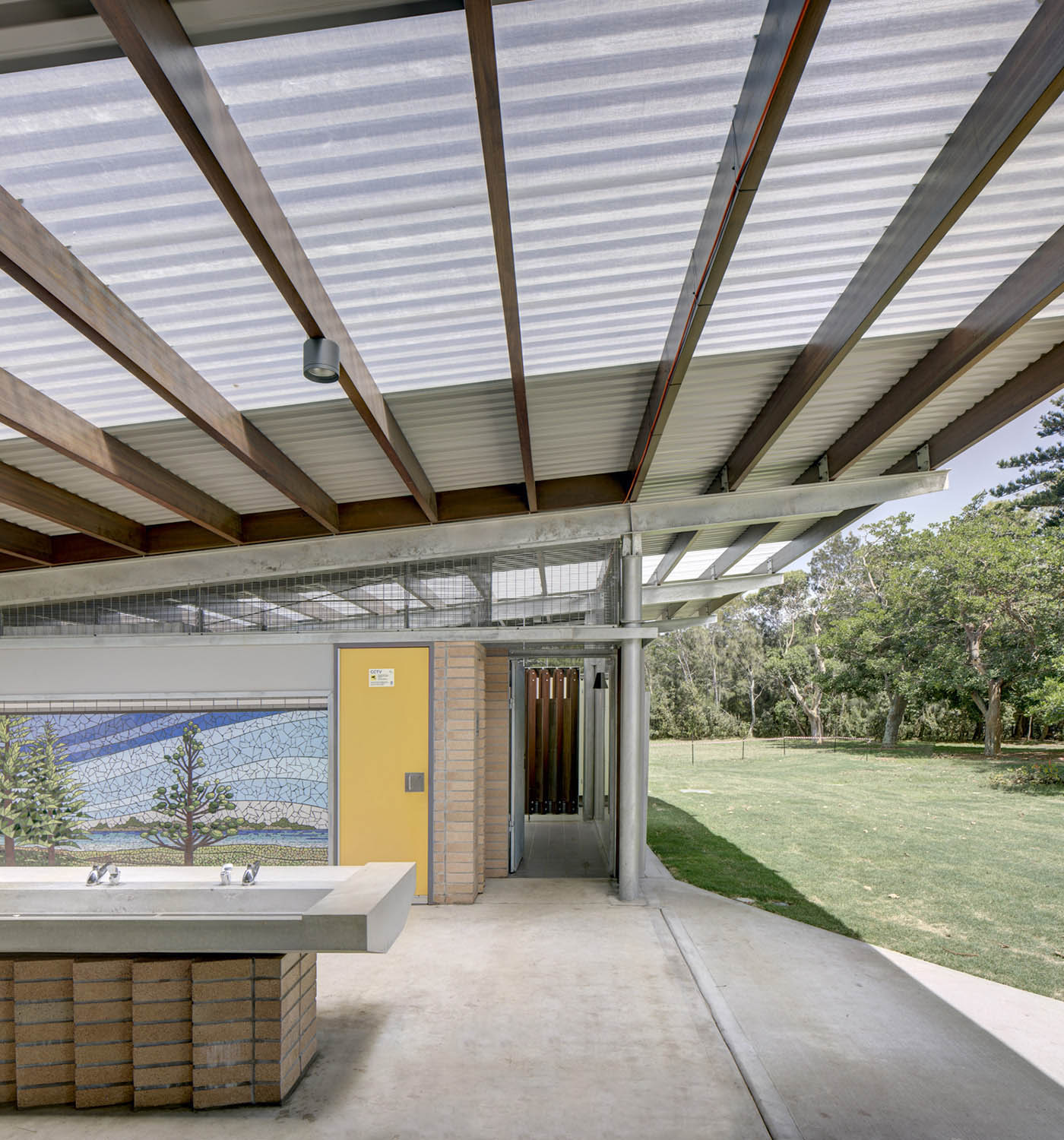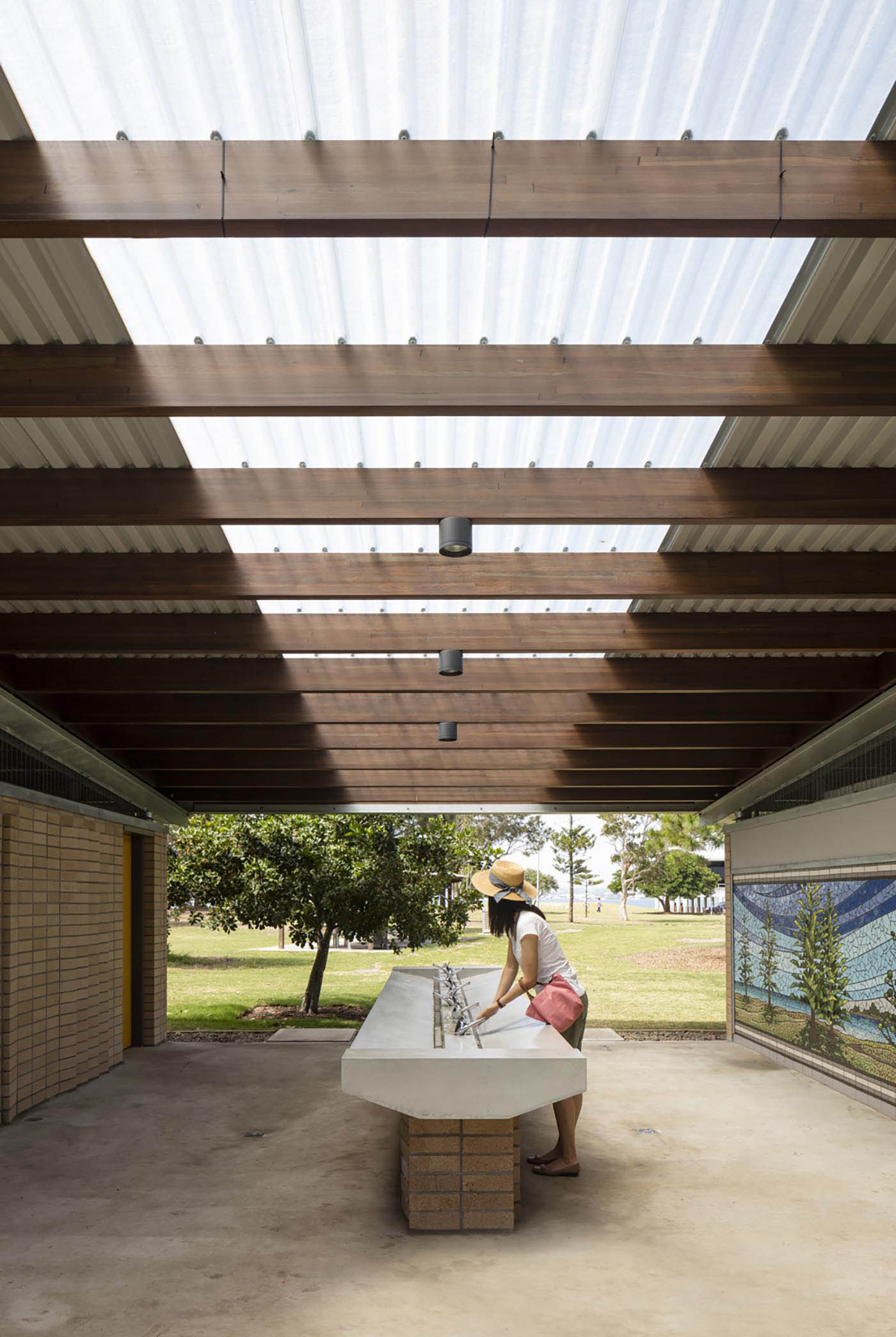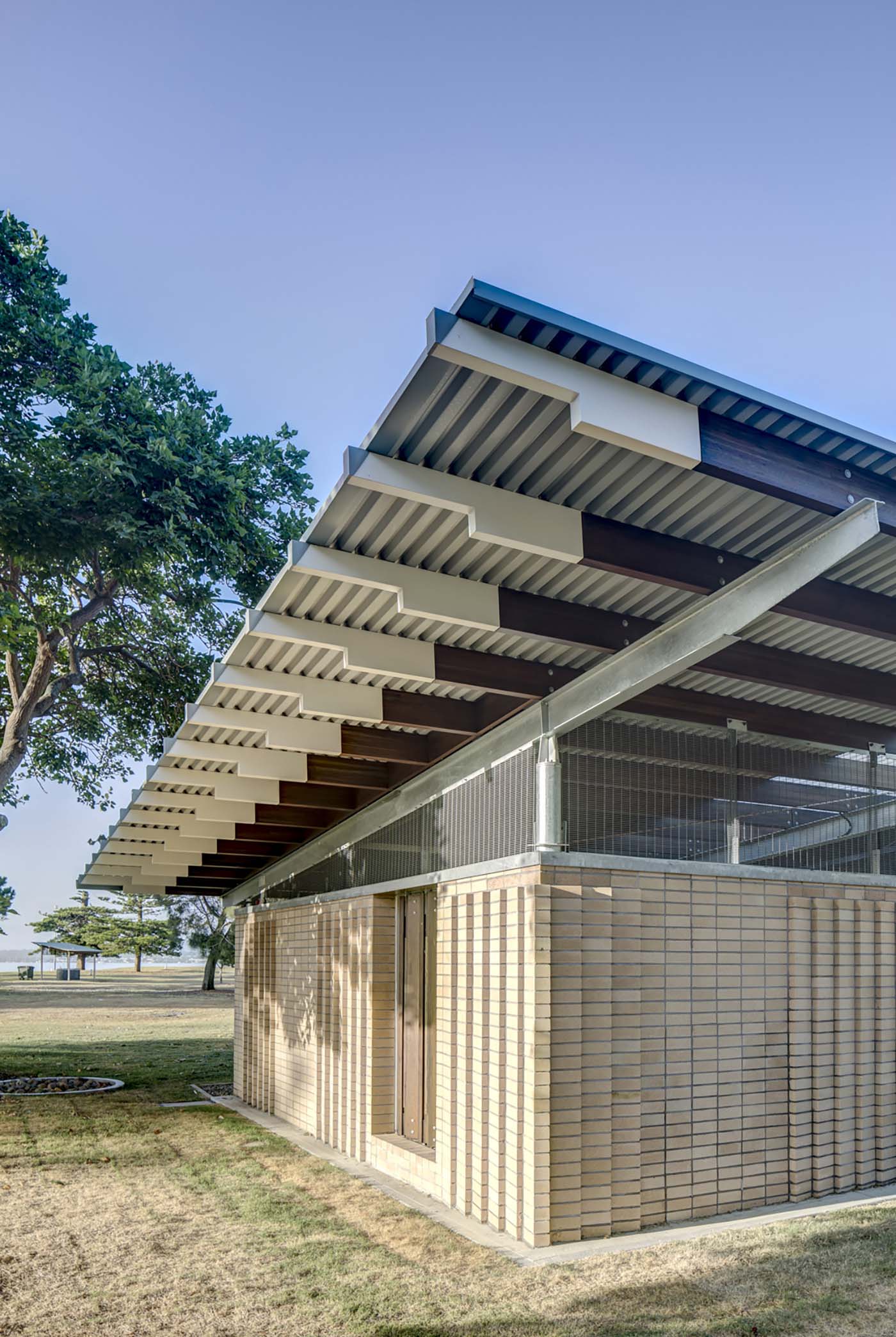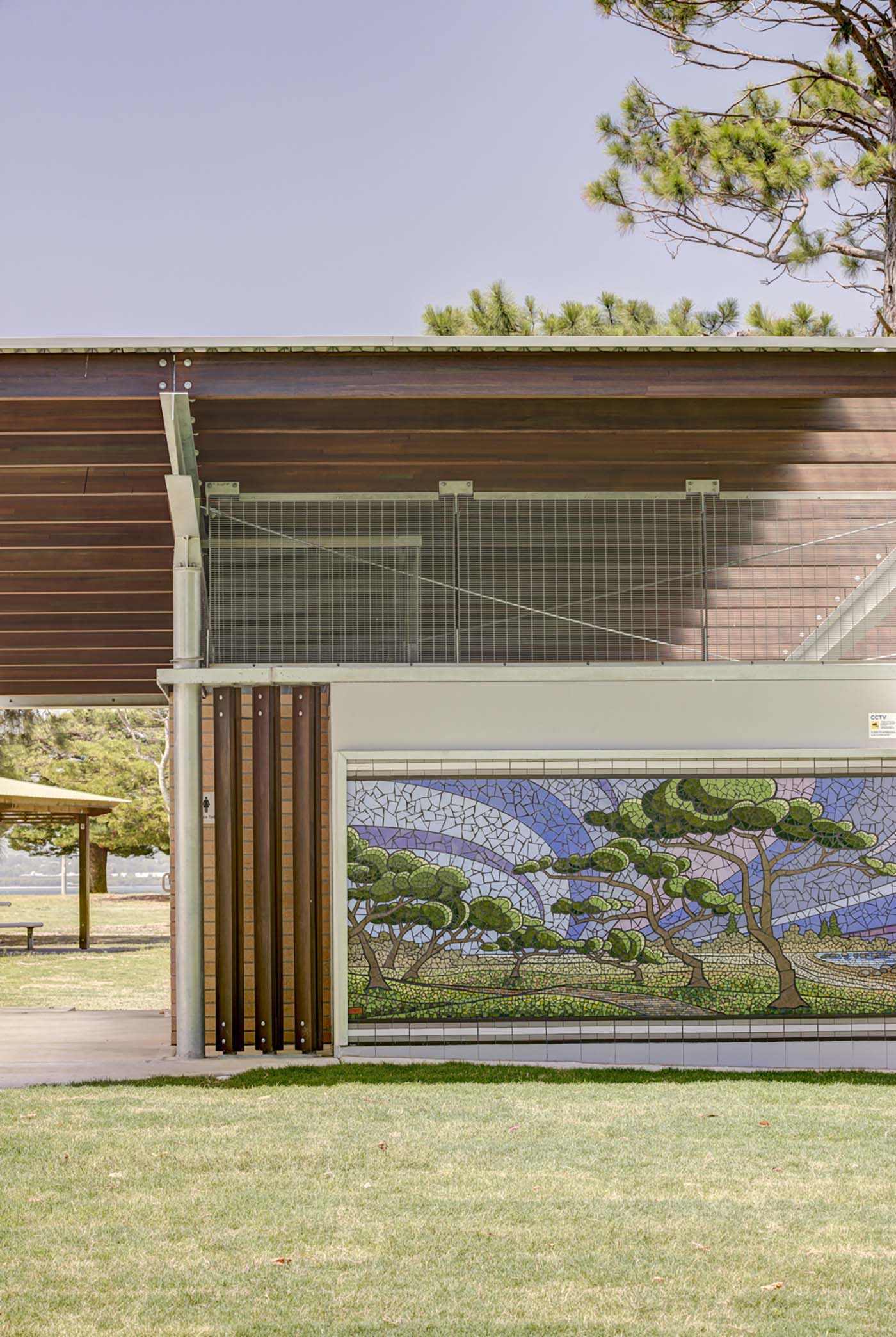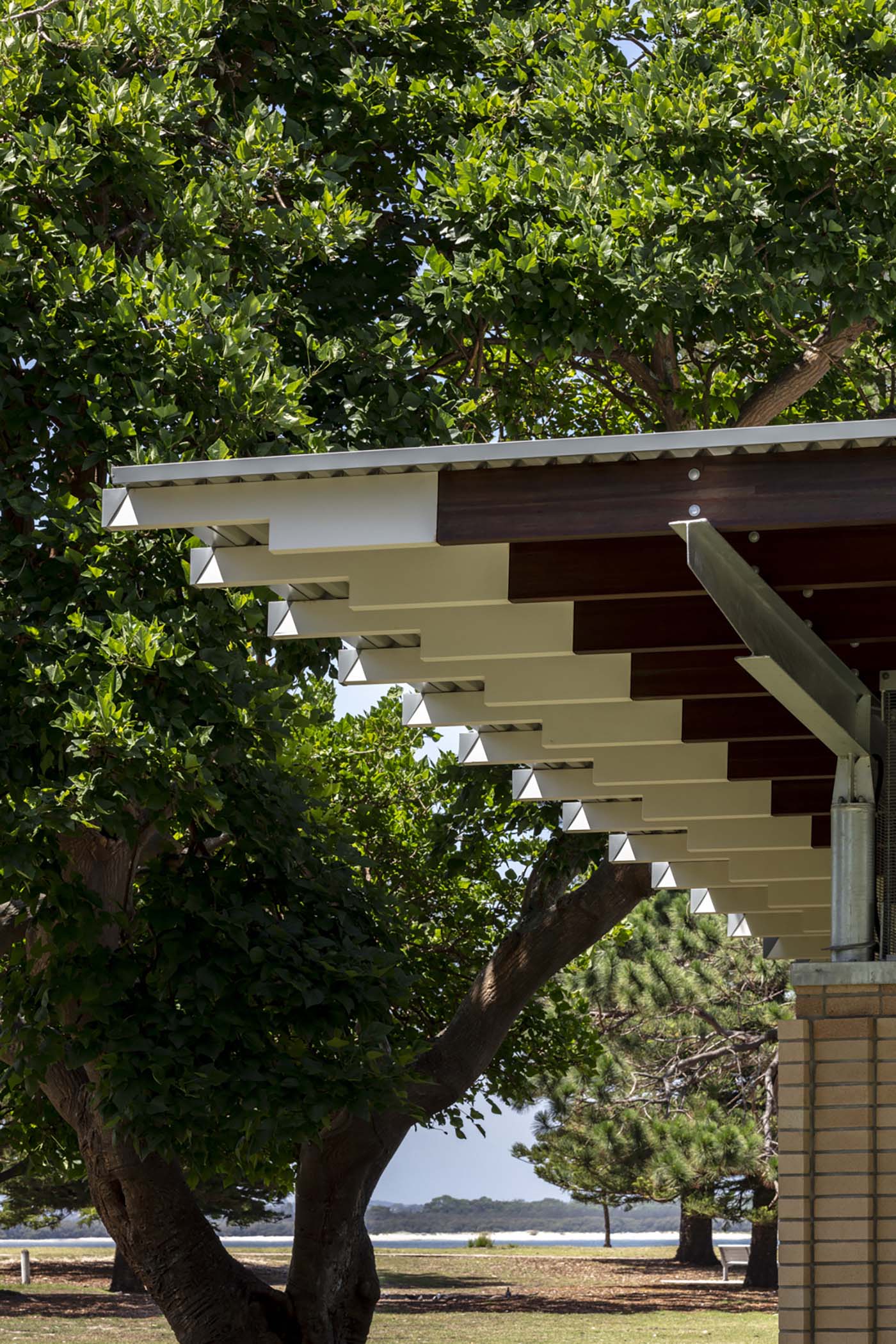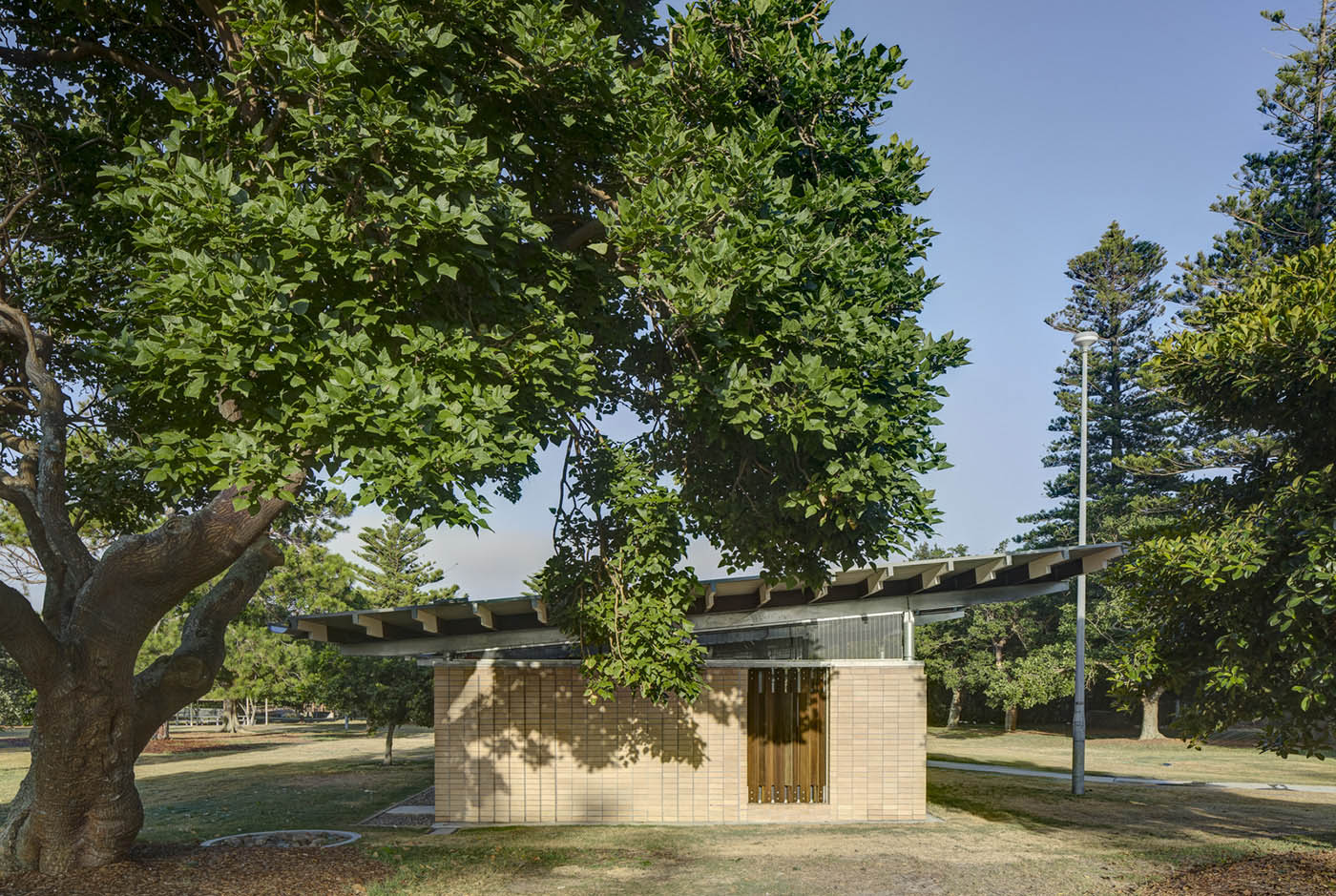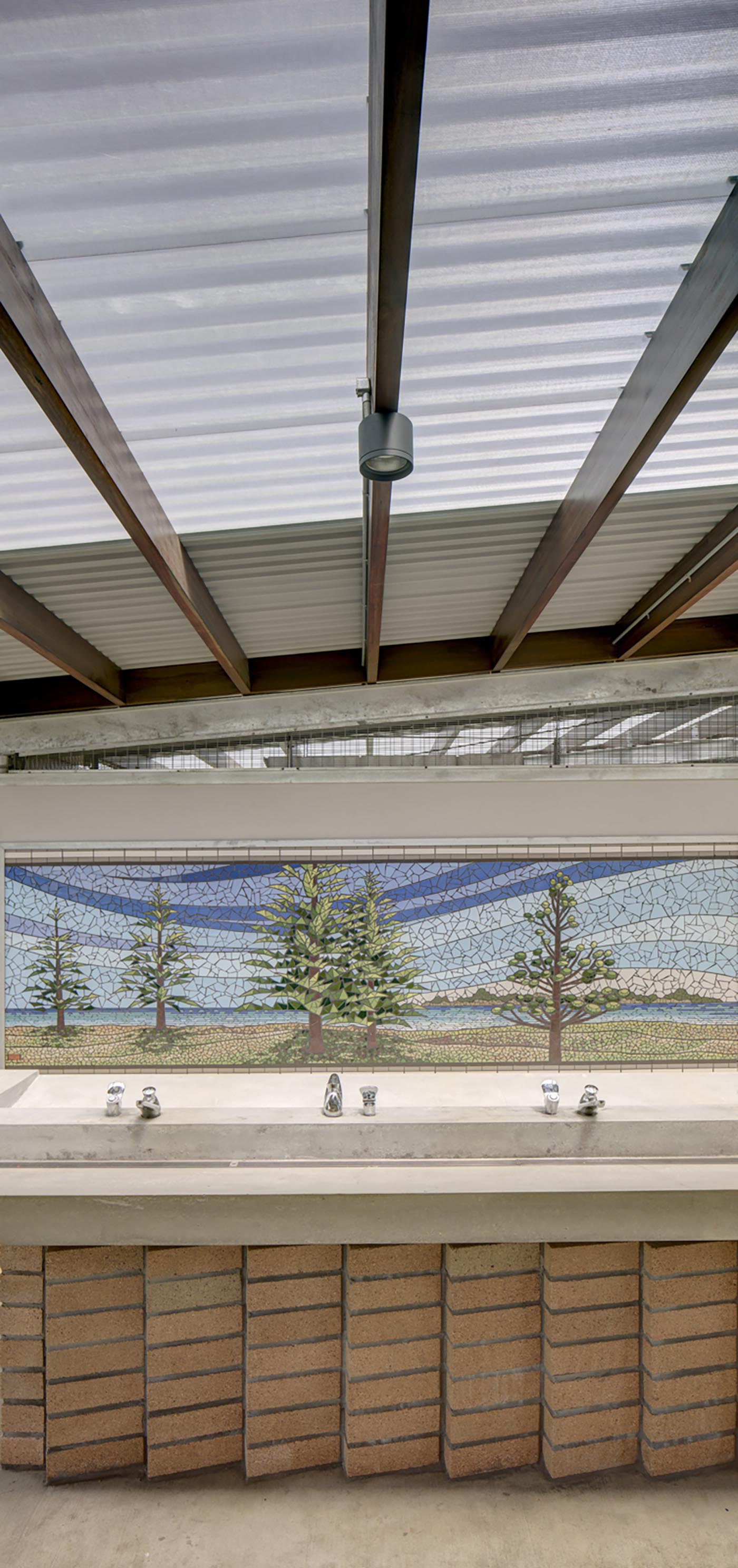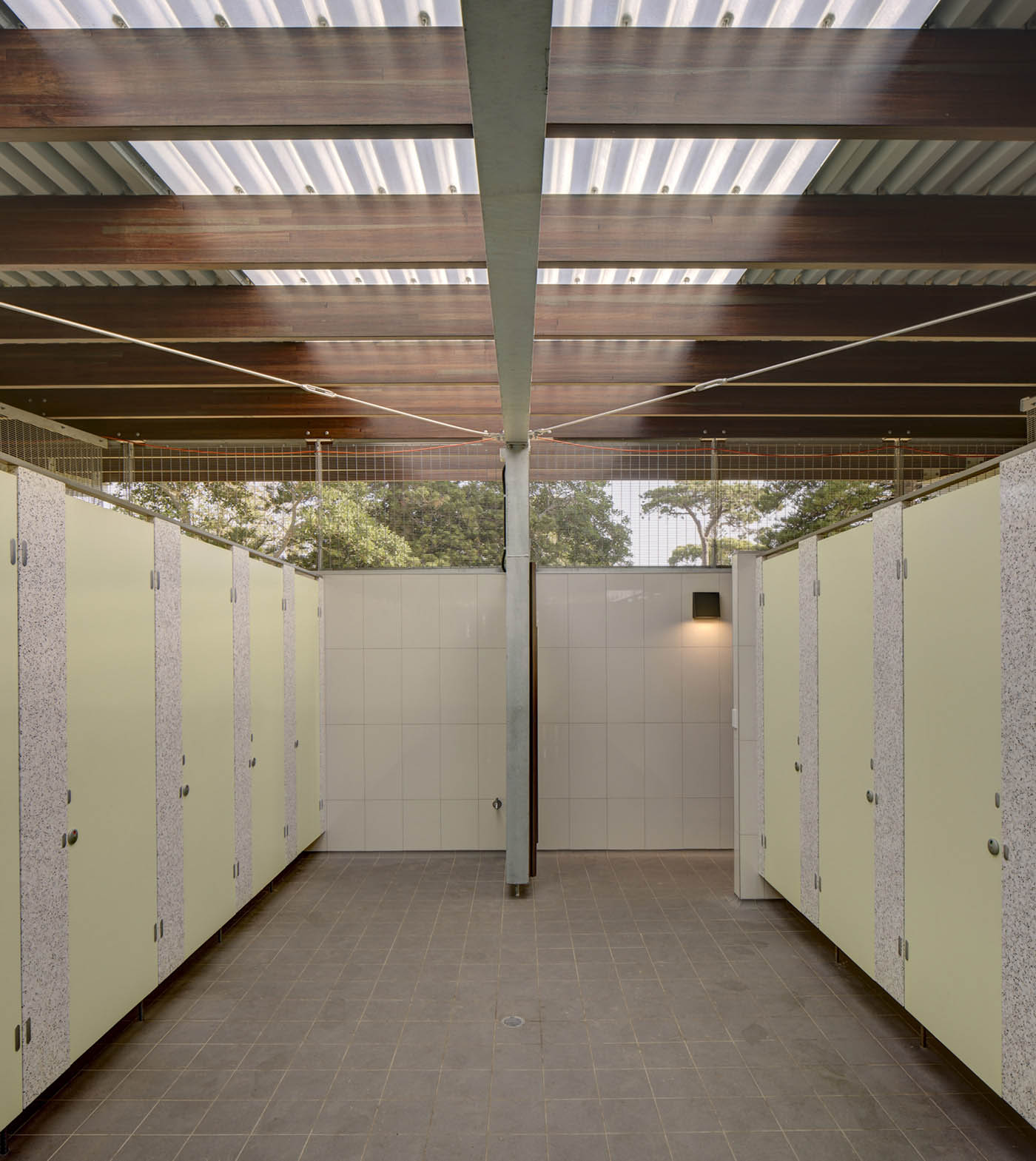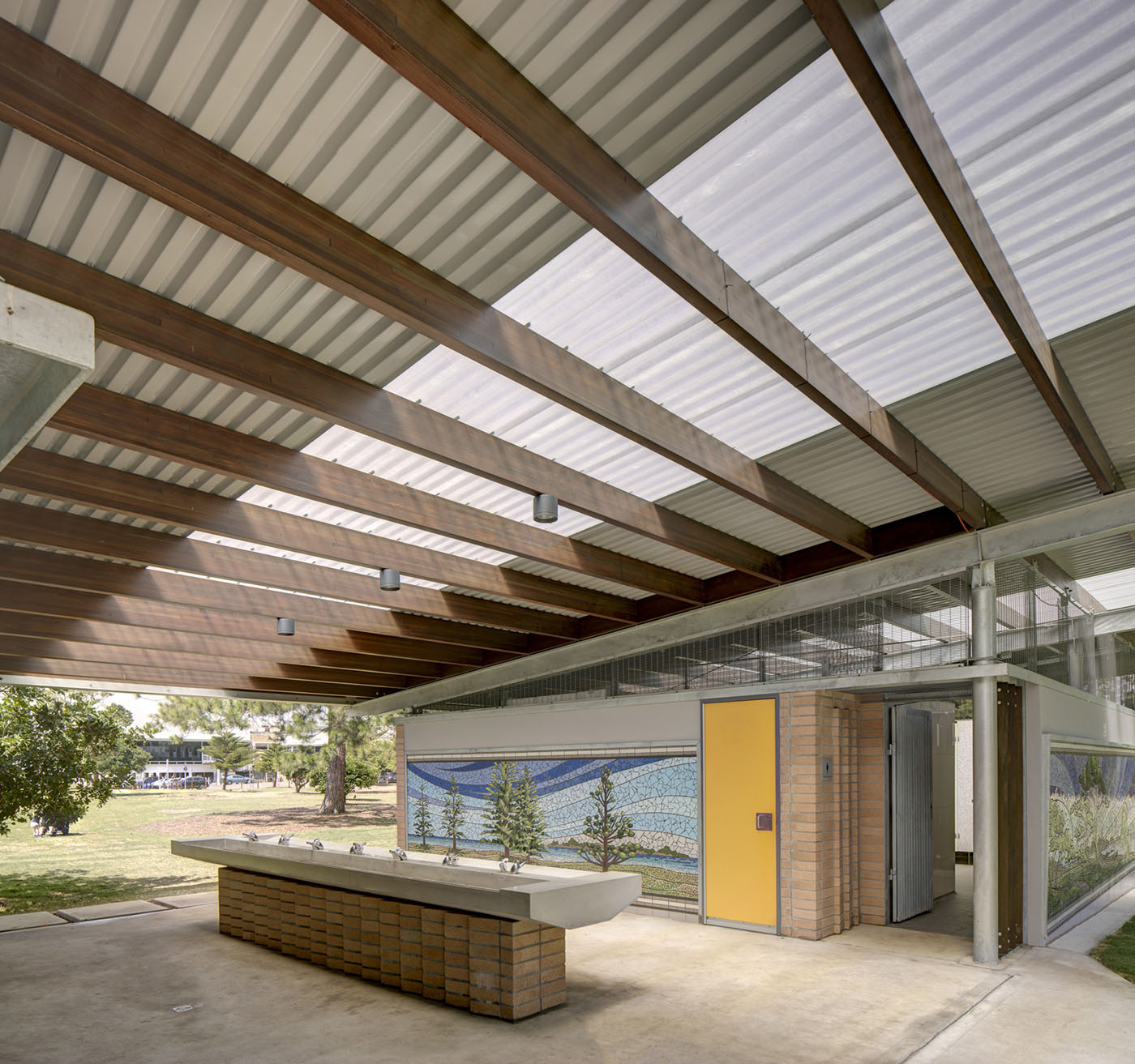Depena Reserve Amenities
2018 Kamey Country / Dolls Point, NSW
The design of a new amenities building for Bayside Council strikes the balance between a light and airy space with ample natural ventilation and daylight, with the requirement for passive security.
The new building, built partially within the shell of an older structure, significantly increases capacity, whilst providing an accessible entry path, and a lunch room for council maintenance staff.
We carefully designed the building to allow north light to penetrate deep into the space via a large, north-facing skillion roof. This light is amplified by strips of translucent roofing above a communal, open wash trough.
The decorative brick herringbone pattern discourages graffiti and references other amenities commissioned by Bayside Council along the shores of Botany Bay. Rainwater is captured and delivered to underground soaker pits and water use is minimised via the use of efficient fixtures. The new design incorporated four large well-loved mosaics by artist Steven Vella previously located on each side of the former building.
Situated on the shores of Botany Bay in the south of Sydney, Depena Reserve is a very popular weekend destination for family picnics, fishing and kite surfing. The tired existing amenities were not equipped to cope with peak demand.
Legend has it that Dolls Point was named for a young escaped convict who took shelter in the dunes to evade authorities. Dolls Point forms part of the promontory north of where the Georges River flows into Botany Bay. Aboriginal people have camped, fished and hunted in the area for thousands of years. Evidence of their occupation of the area in the form of shell middens and spear heads is still being uncovered.
According to the Australian Museum, when the British arrived in January 1788, there were more than 1500 Aboriginal people living in the area from Botany Bay to Broken Bay and as far west as Parramatta. They belonged to many clans including the Kamey, Gadi, Wangal, Wallumede, Boromede, Gamara, Boroge, Birrabirra and Gayamay. They spoke languages now known as Darug, Dharawal and possibly Guringai. Decedents of the original inhabitants and owners of the land still live in the area.
Project Team
Sam Crawford, Ben Chan, Anna Paton, Ken Warr
Builder
2020 Projects
Consultant Team
Structural Engineer – Partridge
Hydraylic Engineer – ITM Design
Electrical Engineer – Lighting Art + Science
QS – Bylett and Associates
Client
Bayside Council
Photographer
Brett Boardman
